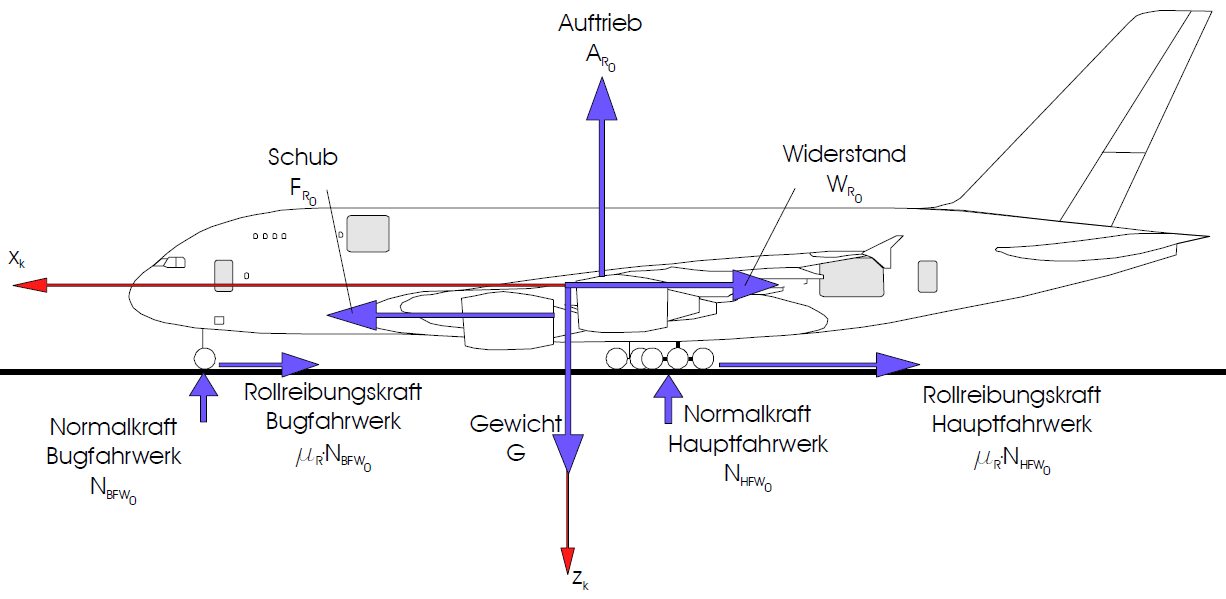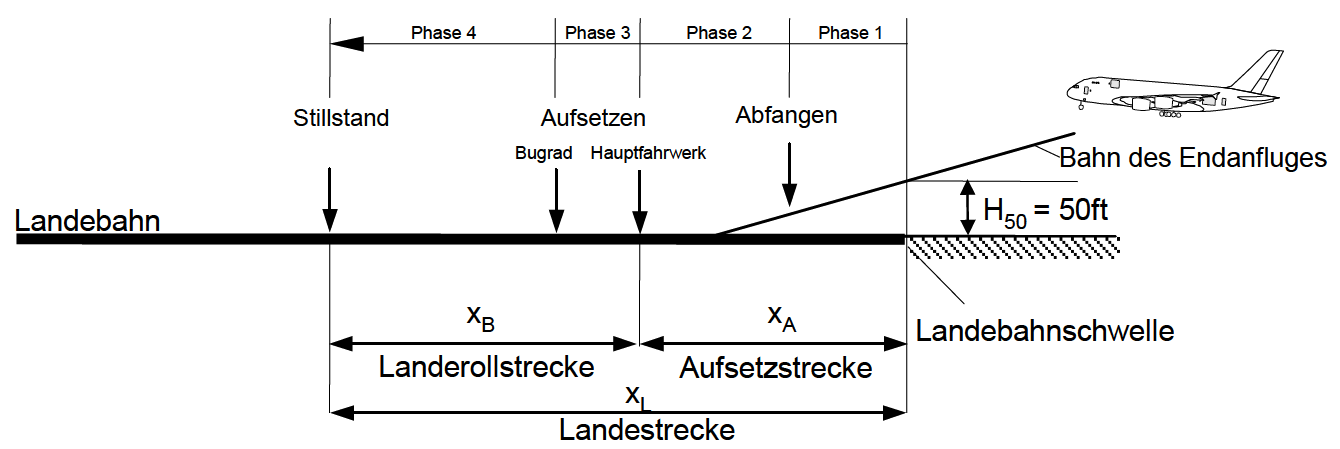In the context of flight performance calculations, the necessary take-off and landing distances are determined on the basis of flight-mechanical principles and legal requirements. Extensive input data is required for this, such as
- Speeds (approach and landing speed, v1, take-off speed, v2 etc.),
- Thrust,
- Aerodynamic coefficients,
- Rolling friction coefficients,
- Braking forces,
- Weights etc.
The determination of these data is part of these analyses. The basis of the flight performance calculations is the determination of the forces (weight, lift and drag force) acting on an airframe based on the flight-mechanical equation system.
Flight performance calculations are used, among other things, to determine the required take-off and landing distances within the framework of demand and expansion planning for airfields.
A specific flight performance model is also the basis of the Enhanced Trajectory Analysis System (ETAS) developed by GfL, which, in addition to the precise calculation of flight-specific fuel consumption for aircraft with jet and turboprop engines, also permits the determination of pollutant emissions (e.g. COx, NOx, HC, PM, etc.).



